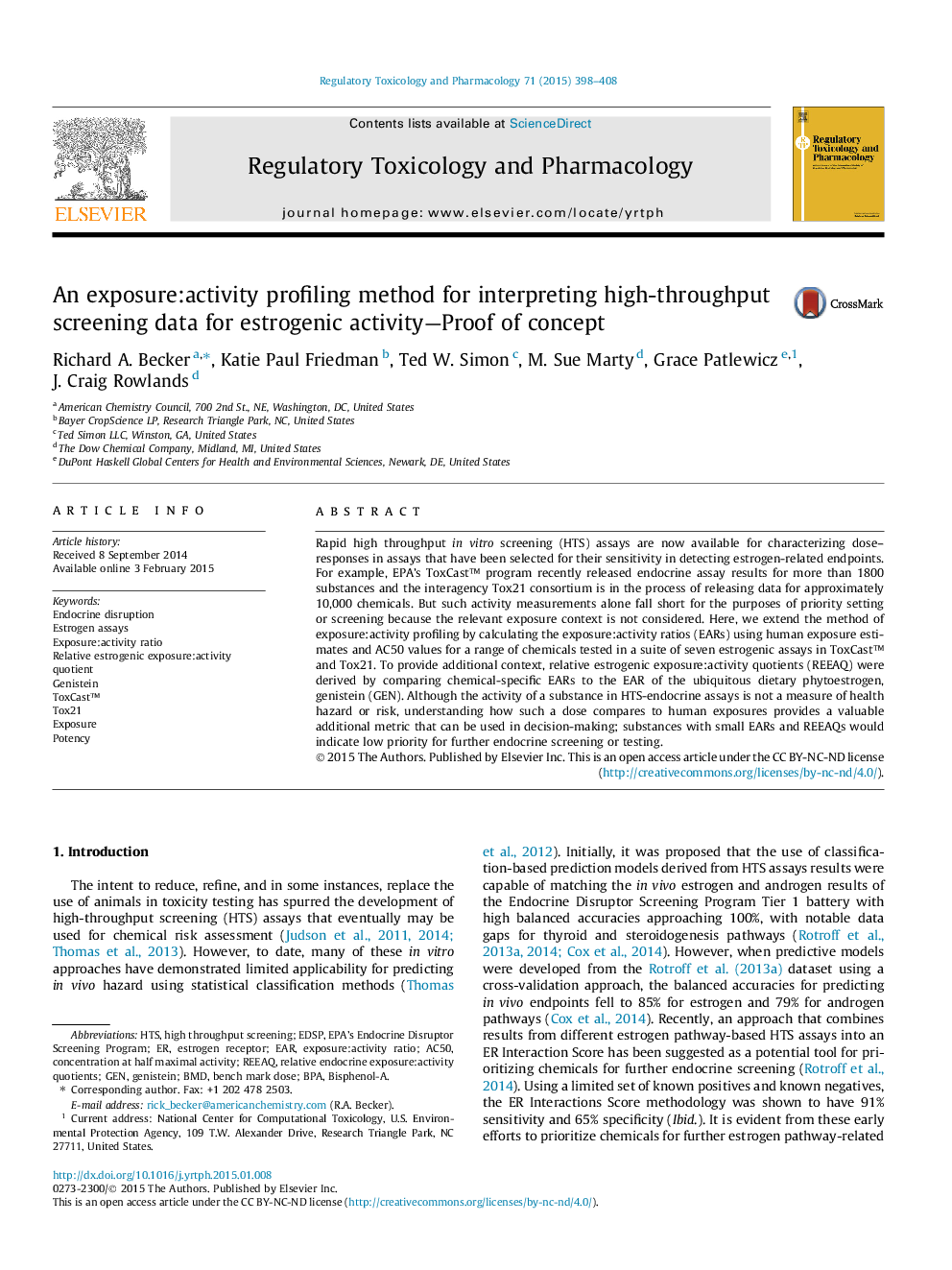| Article ID | Journal | Published Year | Pages | File Type |
|---|---|---|---|---|
| 5856649 | Regulatory Toxicology and Pharmacology | 2015 | 11 Pages |
Abstract
Rapid high throughput in vitro screening (HTS) assays are now available for characterizing dose-responses in assays that have been selected for their sensitivity in detecting estrogen-related endpoints. For example, EPA's ToxCast⢠program recently released endocrine assay results for more than 1800 substances and the interagency Tox21 consortium is in the process of releasing data for approximately 10,000 chemicals. But such activity measurements alone fall short for the purposes of priority setting or screening because the relevant exposure context is not considered. Here, we extend the method of exposure:activity profiling by calculating the exposure:activity ratios (EARs) using human exposure estimates and AC50 values for a range of chemicals tested in a suite of seven estrogenic assays in ToxCast⢠and Tox21. To provide additional context, relative estrogenic exposure:activity quotients (REEAQ) were derived by comparing chemical-specific EARs to the EAR of the ubiquitous dietary phytoestrogen, genistein (GEN). Although the activity of a substance in HTS-endocrine assays is not a measure of health hazard or risk, understanding how such a dose compares to human exposures provides a valuable additional metric that can be used in decision-making; substances with small EARs and REEAQs would indicate low priority for further endocrine screening or testing.
Keywords
Related Topics
Life Sciences
Environmental Science
Health, Toxicology and Mutagenesis
Authors
Richard A. Becker, Katie Paul Friedman, Ted W. Simon, M. Sue Marty, Grace Patlewicz, J. Craig Rowlands,
